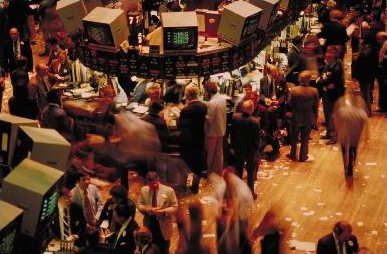Researchers at the University of Cambridge have discovered that the performance of financial traders is linked to their hormones.
 Joe Herbert and John Coates followed 17 city traders in London over an 8 day period, logging their daily profits and losses, and comparing them with the traders' testosterone levels, which were measured using saliva samples collected at 11am and 4 pm each day.
Joe Herbert and John Coates followed 17 city traders in London over an 8 day period, logging their daily profits and losses, and comparing them with the traders' testosterone levels, which were measured using saliva samples collected at 11am and 4 pm each day.
The results showed that on days their 4pm results showed an above-average return, traders' morning testosterone levels were 25% higher than on days when they made no return, or lost money. The researchers had also predicted that on loss-making days the traders would show higher levels of the body's main stress hormone, cortisol, but the saliva samples showed no such relationship. Instead there was a strong correlation between cortisol and the degree of unpredictablility or volatility seen in the market. The harder the market was to read, the higher a trader's cortisol level.
These findings, say the researchers, could explain the basis of the boom and bust nature of financial markets. Testosterone levels rise when a runner comes first in a race, boosting confidence, promoting a willingness to gamble and increasing impulsivity. Testosterone also provokes the release of the brain's pleasure chemical dopamine, which might explain why traders also describe getting a buzz from their job. Cortisol, on the other hand, when present in large amounts for long periods of time, is linked to sensations of anxiety and feeling threatened and therefore promotes risk-avoidance behaviour.
So Putting these two findings together shows how market bubbles, like the dot-bomb boom, can occur, and why crashes can become entrenched, as risk-averse traders desert the financial dance floor.










Comments
Add a comment